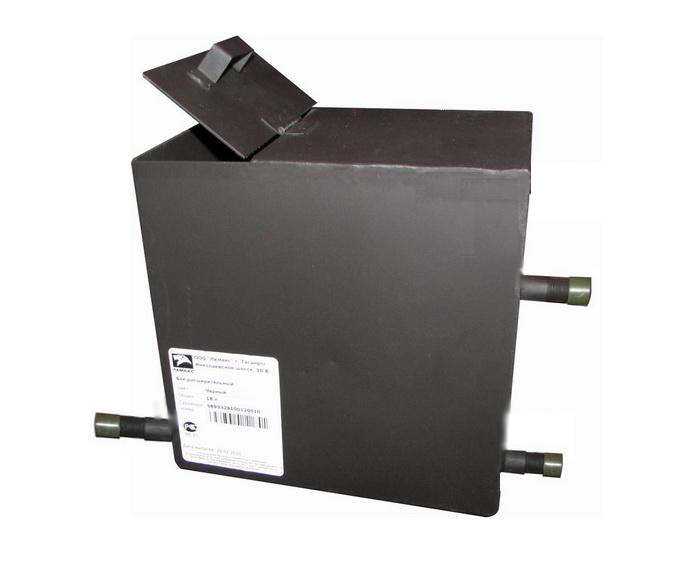Please do not block ads on our site. Clicks on ads help us exist, grow and become more useful for you!
Design of the expansion tank
Closed Expansion Tank
Design of the expansion tank - a hermetically sealed steel vessel, divided by a flexible waterproof membrane into two parts. One part is fitted with a fitting for connection to the heating system, while the other part is filled with gas (usually nitrogen). The gas part is equipped with a valve necessary for setting the initial pressure.
In membrane expansion tanks, the water does not come into contact with air, which significantly reduces its corrosive activity, and the pressure in the tank and the heating system can vary over a wide range. Closed tanks are easy to install and can be mounted horizontally or vertically, have a flat or cylindrical body, and either stand on legs or be wall-mounted.
The membrane can be either replaceable or non-replaceable. The price of expansion tanks with a replaceable membrane is higher than that of tanks of the same volume with a non-replaceable membrane, but in case of membrane rupture, the entire tank does not need to be replaced. Moreover, in expansion tanks with a replaceable membrane, water does not come into contact with the inner surface of the tank, providing additional protection against corrosion.
Butyl membrane is used in expansion tanks for water with temperatures from -10°C to +100°C and has lower elasticity compared to rubber, but higher durability.
EPDM membrane - an ethylene-propylene membrane, installed for water temperatures from -10°C to +100°C, like the rubber membrane, does not prevent water diffusion.
Rubber membrane is typically used in pressure tanks for water with temperatures from -10°C to +50°C. It is elastic but not durable, and water diffusion is possible over time. Expansion tanks with a rubber membrane are usually not equipped.
Advantages of membrane expansion tanks
- Prevents water from absorbing air
- Can be installed anywhere in the heating system
- Easy to install and available in different designs
- Wide range of allowable pressures in the heating system
Disadvantages of membrane expansion tanks
- Possible membrane rupture
- A safety valve is required
- The pressure in the heating system changes depending on the water temperature
- The price of membrane expansion tanks is higher than that of open tanks
Membrane expansion tanks are widely used in modern heating systems and have practically replaced open-type tanks.
Open Expansion Tank
Design of the expansion tank of the open type - a steel tank with a hatch at the top, two pipes at the bottom, and one in the middle of the tank. The two pipes at the bottom are necessary to create water circulation through the tank, and the pipe in the middle is for controlling the water level, which is drained through a valve. Open expansion tanks have been used in water heating systems since their inception, typically installed in attics or staircases of buildings.
Advantages of non-pressurized expansion tanks
- Simple design
- Acts as an air vent
- Low cost compared to membrane expansion tanks
Disadvantages of open expansion tanks
- Requires thermal insulation
- Installation only at the highest point of the heating system
- Connection to the heating system requires three pipes
- Water becomes saturated with oxygen, leading to high corrosive activity
question : comment : feedback
330
 Catalog of
Catalog of expansion tanks
Zilmet
Reflex
Reflex
Reflex
Reflex
Aquapress
Elbi
Elbi
Elbi
Elbi
Varem
Varem
Varem
Varem
Imera
Imera
Imera
Wates
Pneumatex
Pneumatex
Pneumatex
Grundfos
Flamco
Flamco











